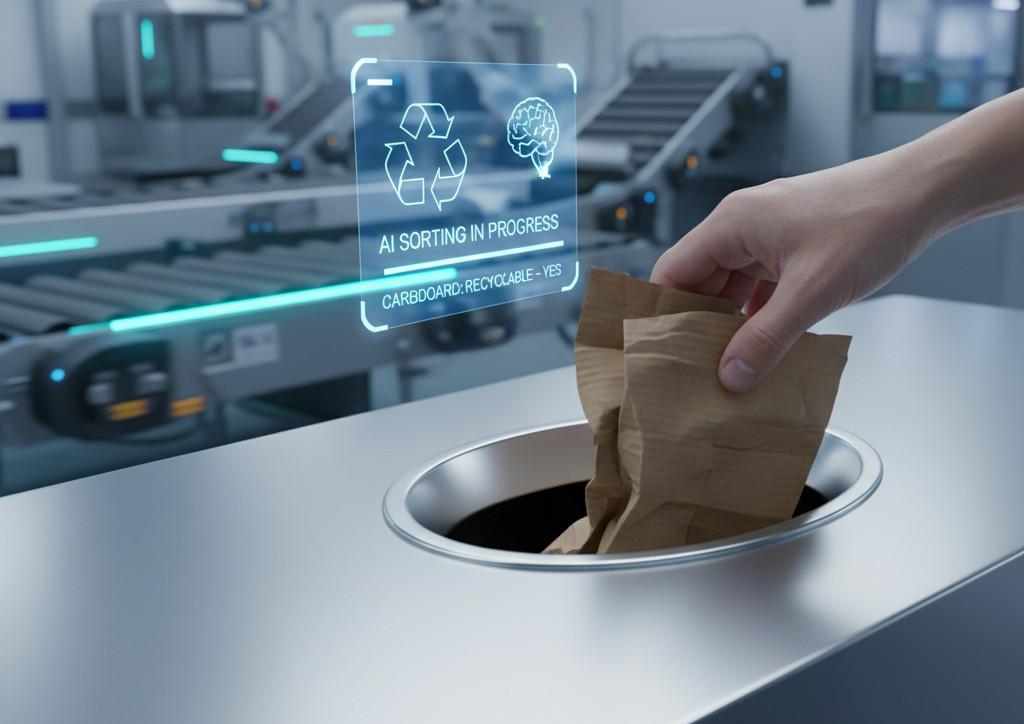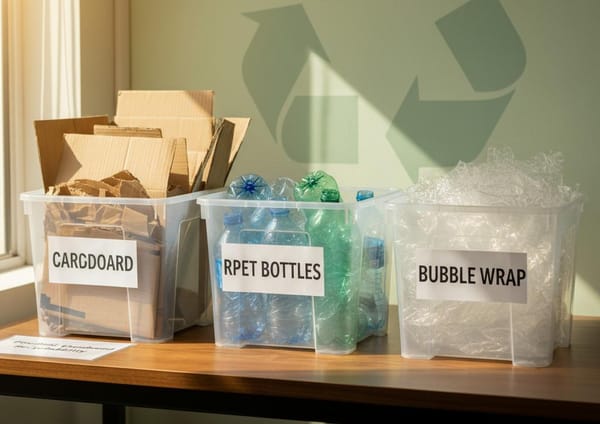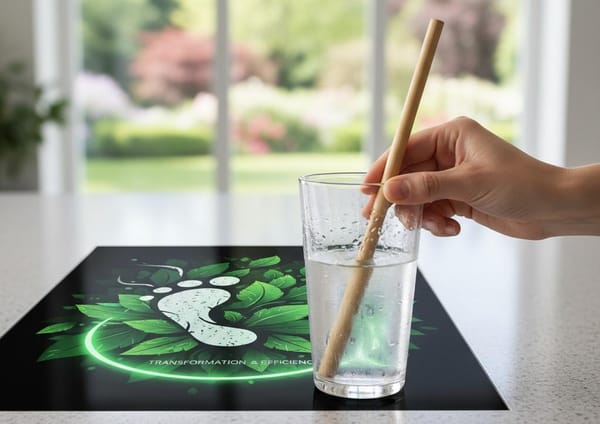Is cardboard recyclable? Secrets to cleaner curbside recycling

Is cardboard recyclable?
Yes — and more often than you might think. Every time you flatten a shipping box or stash packing paper at the curb, you take part in a simple but powerful recycling loop that saves trees, reduces landfill waste, and cuts energy use. In plain terms, cardboard and corrugated paperboard are accepted by most curbside programs and commercial recycling streams, so you usually do not need to toss them in the trash.
Why this matters is clear. First, cardboard recycling diverts huge volumes of material from landfills. Second, because paper fibers can be reused multiple times (typically up to five to seven cycles), recycling keeps valuable resources in use longer. For example, fact: paper and cardboard are among the highest-recycled materials in municipal recycling programs, which helps lower greenhouse gas emissions and conserve raw pulp. Therefore, recycling cardboard is one of the easiest, highest-impact actions you can take at home or at work.
In this guide we will cut through common myths, explain what can and cannot go in the bin, and share practical tips so your cardboard actually gets recycled — not rejected at the sorting facility.
Is cardboard recyclable? The short answer and why it matters
Yes. Cardboard and corrugated paperboard are widely recyclable in municipal and commercial streams. Because fibers can be reused multiple times, recycling cardboard supports sustainability, waste reduction, and a lower carbon footprint. For example, the US Environmental Protection Agency notes, "In 2018, paper and paperboard accounted for approximately 67% of the total municipal solid waste (MSW) recycled in the United States". See details.
How the recycling process works
Understanding the recycling process helps you prepare cardboard so it actually gets recycled. Key steps include:
- Collection and drop off or curbside pickup at your local recycling program
- Sorting at a materials recovery facility where cardboard is separated from mixed paper and contaminants
- Pulping where cardboard is mixed with water and broken into fibers
- Screening and cleaning to remove tape, glue, staples, and heavy contaminants
- Deinking and refining for paper grades that need it
- Drying and rolling into new paper or corrugated board
This recycling process is efficient because corrugated material is bulky but valuable. Therefore recycling facilities prioritize it and many mills are set up to take recycled fiber back into production. For more on recycled packaging and sustainability, see this resource and this guide.
Environmental benefits and real impacts
- Saves trees because recycled fiber reduces demand for virgin pulp
- Cuts energy use and water consumption compared with making paper from raw wood
- Reduces landfill volume and methane emissions from decomposing paper
- Supports circular materials markets and local recycling jobs
According to EPA data, corrugated boxes had a recycling rate above 90 percent in recent years, which shows the system works when cardboard is clean and dry. For insights on sustainable packaging choices that complement cardboard recycling, see this information.
Common uses of recycled cardboard and why they matter
Recycled cardboard finds new life in many everyday products. Because recycling reduces cardboard waste and keeps fibers in circulation, these recycled cardboard applications cut demand for virgin pulp and lower greenhouse gas emissions. According to the EPA, paper and paperboard are among the most recycled materials in U.S. municipal programs: EPA Facts and Figures.
Key uses include:
- Packaging and shipping boxes — Recycled corrugated board returns to boxes and mailers, saving trees and energy. For brands exploring sustainable options, cardboard often pairs with rPET packaging strategies.
- Protective inserts and cushioning — Corrugated pads, honeycomb fillers, and molded-fiber trays protect goods without plastic. This supports waste reduction at scale and reduces postconsumer cardboard waste.
- Paper products — Cardboard fibers become office paper, paperboard, and tissue products when processed back into pulp.
- Furniture and fixtures — Designers use laminated corrugate to build stools, shelving, and temporary furniture that is light and recyclable.
- Art, design, and educational projects — Schools and artists use sheet corrugate for models, sculptures, and craft projects.
- Compost, mulch, and garden uses — Flattened cardboard suppresses weeds, adds carbon to compost, and reduces landfill-bound cardboard.
For businesses considering circular materials, recycled cardboard often complements other recycled materials in packaging systems; see how recycled bottles feed a circular economy for related thinking: Recycled Bottles Guide.
These practical applications show how recycled cardboard reduces cardboard waste, conserves resources, and supports sustainability goals across industries.
| Facility Name | Accepted Materials | Accessibility | Processing Capacity | Environmental Benefit |
|---|---|---|---|---|
| Curbside recycling programs | Corrugated cardboard, shipping boxes, paperboard, flattened cartons (no greasy or wet) | High — doorstep pickup in many cities | Moderate: handles household volumes; collected weekly | Reduces landfill waste; high diversion rates when uncontaminated |
| Drop-off recycling centers | Same as above plus small-bale cardboard | High — open to residents; some accept commercial loads | Low to moderate: local scale; good for extra cardboard | Keeps bulky cardboard out of trash; supports local sorting |
| Materials recovery facility (MRF) | Mixed paper, OCC (old corrugated containers), paperboard; may reject contaminated loads | Access via curbside or commercial routes | High: centralized sorting and baling; large throughput | Enables large-scale recycling and fiber recovery |
| Commercial recycling services | Corrugated, pallets, baled cardboard, shrink-wrap options | Accessibility: businesses via pickup contracts | Very high: tailored to commercial volumes | Diverts large volumes; reduces transport emissions via compact baling |
| Direct-to-mill / Paper mills | Clean, baled corrugated and mixed paper | Accessibility: usually commercial; requires baling and minimum quantities | Variable: mills can process high volumes | Maximizes material value; reduces reprocessing steps |
| Community collection and baling events | Corrugated boxes, bulk cardboard | Accessibility: occasional local events | Low to moderate | Encourages community participation; captures overflow cardboard |
Is cardboard recyclable?
Yes — and that quick answer points to a simple way you can help right now. Recycling cardboard diverts bulky material from landfills, saves trees, cuts energy use, and keeps fibers in circulation so fewer virgin resources are needed. Because paper fibers can be reused multiple times, recycling cardboard multiplies its environmental value. In short, recycling cardboard is one of the highest-impact, lowest-effort actions most households and businesses can take.
Therefore act with purpose. Flatten boxes, keep them clean and dry, remove greasy or wet pieces, and follow your local curbside rules or drop-off options. Businesses can bale and contract pickups to maximize efficiency. When many people do these small things, the cumulative effect is large: less waste, lower emissions, and stronger local recycling systems. So yes, is cardboard recyclable — and by participating you help build a more sustainable, circular future. Take a moment today to sort that next box properly; it matters more than you might think.
Frequently Asked Questions (FAQs)
Is cardboard recyclable?
Yes. Most cardboard and corrugated boxes are accepted in curbside and commercial recycling streams. Keep them clean and dry so they do not get rejected at the sorting facility.
What cardboard cannot be recycled?
Wet, greasy, or food-soiled cardboard (for example, pizza boxes with heavy grease) often cannot be recycled. Likewise, cardboard with lots of tape, wax coating, or attached packing foam may be diverted from recycling and should be disposed of or composted if appropriate.
How should I prepare cardboard for recycling?
Flatten boxes to save space. Remove nonpaper packing like plastic windows, bubble wrap, and large tape strips. Then place cardboard in the curbside bin or bring it to a drop-off site. For businesses, bale cardboard to increase collection efficiency.
Can I compost cardboard instead of recycling it?
Yes, small amounts of plain, non-glossy cardboard can be composted or used as a weed-suppressing mulch. However, recycling usually has a higher material recovery value because fibers can be reused several times.
How many times can cardboard be recycled?
Cardboard fibers can typically be reused about five to seven times before they become too short to form new paper. Therefore recycling keeps valuable fiber in use and reduces demand for virgin pulp.
If you still have a question, check your local recycling rules because programs vary by city and provider.



